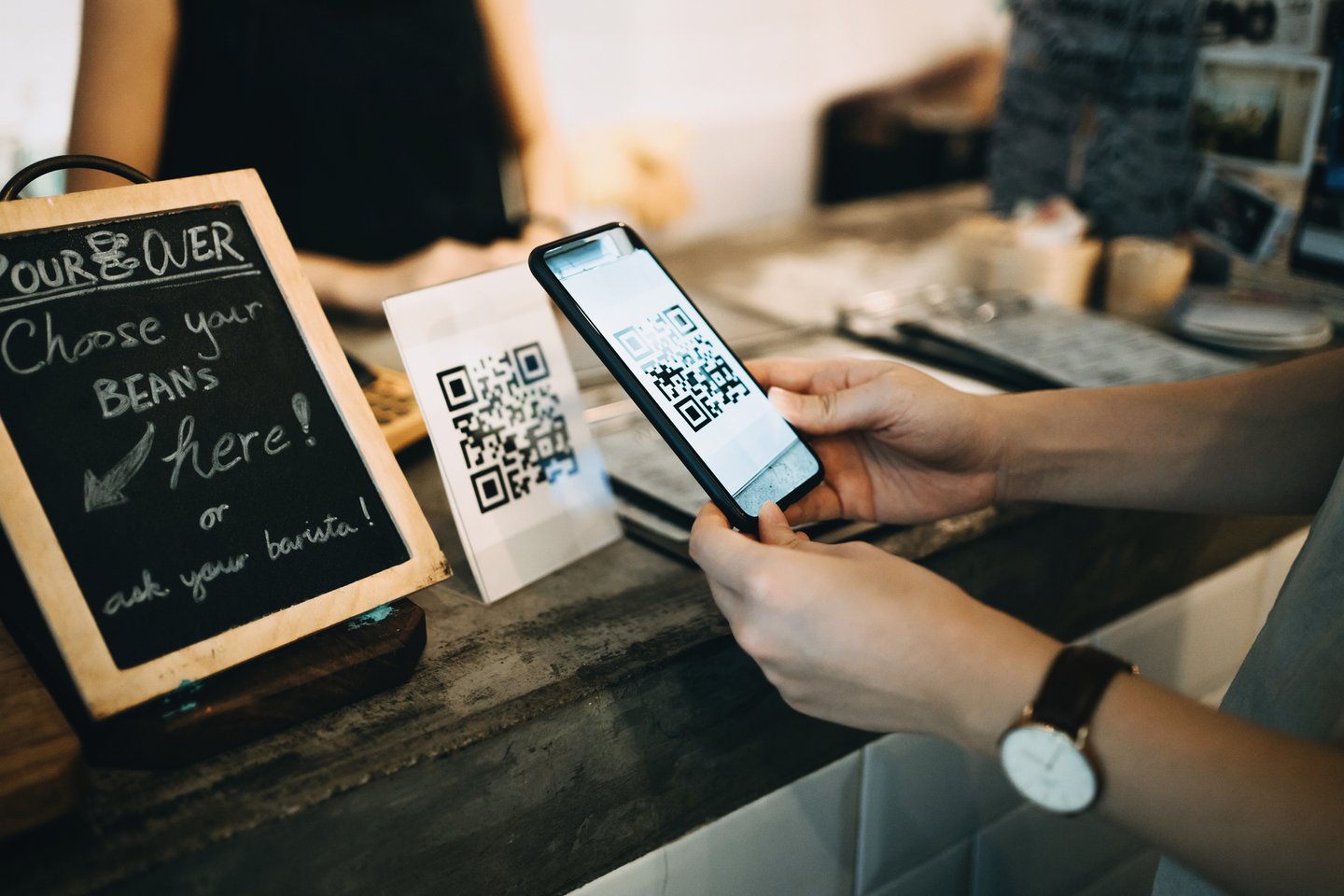Efficiency on the Menu: Delivery, QR Codes & More
The first installment of Efficiency on the Menu revisited the need for tight integrations and managing food costs and detailed Smokey Bones' and Maru Hospitality Group's tech transformations.
The Tale of Two Menus
Depending on your restaurant concept, consider offering a dine-in menu and scaled down delivery menu that only features items that travel well for delivery.
“I think we all can acknowledge that it's pretty close to impossible to get restaurant quality food delivered … If you're having food delivered, you've already decided that my priority right now is not the best food I can get. It's convenience,” explained Rishi Nigam, CEO of host kitchen marketplace Franklin Junction. Which might partially explain why so many brands are getting into the wing business. Last December, Franklin Junction launched a virtual wing brand, WingDepo in 55 of its ghost kitchens.
[Dickey's Barbecue Pit Partners With Host Kitchen Franklin Junction]
Cihan Cobanoglu, CHTP, McKibbon Endowed Chair & Director of M3 Center, University of South Florida. pointed to a Florida seafood restaurant chain that does not offer its best-selling fried calamari for delivery. Why? Because after the standard 30-40 minutes of delivery time, the dish would be cold and not edible. This proactive step not only streamlines ops, but also helps ensure guest satisfaction and more favorable reviews.
When it comes to delivery, menus must be kept up to date for guest and staff experience. When a restaurant is out of an item, restaurants should be able to strike an item in real-time and push that update on all the delivery sites, Nigam advised.
Restaurants also need to be flexible with what they put on their delivery menus. For example, Outback offers third-party delivery, and its parent company Bloomin’ Brands launched a virtual brand, Tender Shack, last year.
It’s third-party delivery orders are integrated into the POS. “We do use tablets as backup,” Gail Seanor, Outback Steakhouse’s VP of Digital Innovation, Commerce, explained. “If anything goes wrong, we still have the order on the tablet and can enter it manually.”
During shutdown, Outback temporarily streamlined its core menu. "As the world reopened, we added more items back to our menu,” she says.
Outback partners with Olo for online ordering and Omnivore for third-party integration. When managing menus, updates are validated before going live. And the POS has to be updated as well, Seanor explained. It’s a system that works for Outback.
RTN Menu Sync Standard Is Available Now
Restaurant Technology Network (RTN) introduced its new Menu Synchronization Standard earlier this year.
The RTN Menu Sync Standard is a time-saver, allowing restaurant brands to roll out menu updates to third-party platforms faster and more accurately. In a webinar (that’s now available on demand) explaining the standard, George Hutto, Senior BI Developer, Mod Pizza, said, "We are trying to keep that menu standard across a variety of applications − between our stores, menu boards, kiosks, loyalty apps, online ordering and all the rest. Each needs a different integration. If I can simplify that and do it as a 'one stop, press one button and all is good,’ my life gets a lot easier, and my company can react more quickly.”
For Susan Lucas, CIO of Cooper’s Hawk, it's all about standardization across all channels. She also shared a relatable moment: there were three pictures, and the wrong menu picture was uploaded. The menu sync standard minimizes maintenance and time-wasting errors like these.
There's an added bonus when dealing with third-party delivery services. All services have a different integration. “Sometimes their menus may not include all the elements I need for analysis,” Hutto explained. “So if I can be sure I have the same structure going to them, whether or not they use everything, I can still get everything back in a way that's digestible.”
A standard, single integration helps restaurants stand up new channels quickly, which is especially important these days as restaurants are adding delivery services and other new complementary technologies.
“What we sought to deliver with this standard was to have a single integration,” said Christopher Sebes with Results Thru Strategy and RTN board member. “If everybody buys into the standard, there is no integration, just a seamless exchange of data and much less work to bring on a new channel.”
Quicker integrations benefit the industry as a whole and empower restaurants to add new channels quickly. For restaurants “it makes it easier for brands of all sizes to take advantage of this,” added Lucas.
Both the Open API Framework and the Menu Synchronization Standard are available online here.
QR Codes
Adding contactless solutions, including QR codes, are on many restaurants' technology to-do lists. Ninety-two percent of restaurants have added an alternative to a paper/physical menu, including 23 percent adding it in 2021, according to HT's 2021 Restaurant Technology Study.
QR code-enabled menus is the alternative for many restaurants, including Cunningham Restaurant Group (CRG) in Indianapolis.
[QR Codes: One Solution to the Post-COVID-19 Dine-In Problem]
The QR codes are displayed on synthetic cards that have Microban technology for additional sanitation and have been widely accepted by customers across CRG’s 30+ casual and fine dining concepts.
“Guests are using them. Guests are asking for them,” said Carissa Newton, Director of Marketing. CRG is looking at adding tablets and contactless payment via QR code in the future.
Customers and restaurants agree that contactless transactions are here to stay. “Restaurants using QR codes should take advantage of the opportunity to showcase their menu dynamically,” Cobanoglu advised.
For example, on a digital menu, use popups to lead with best-selling items, and showcase wine pairings and side dishes alongside each entree. Restaurants should also consider using QR codes to accept payments and enable guest feedback about their dine-in experience.
“Feedback is a gift. You should be able to act on it. Take the good things and capitalize on marketing your brand,” Cobanoglu said.
Newton is a big proponent of responding to all customer reviews. She shared how Cunningham Restaurant Group is leveraging customer feedback.
Dynamic Pricing on the Menu?
On a flight with 50 passengers, it’s quite possible each passenger paid a different price for their ticket. At a hotel, guests could book a room for $150 today and have to pay $200 if they wait to book until tomorrow.
Dynamic pricing offers provided by hotels and airlines are ethically accepted. But is the restaurant industry ready to embrace dynamic pricing? Restaurants can use dynamic pricing with happy hour promotions or pricing down items. For example, offering a percentage off the full price. “Instead of charging higher prices, what restaurants need to do is price down items,” Cobanoglu explained. For example, a $35 steak is marketed as 25% off on Mondays.
To experiment with dynamic pricing, restaurants do need a robust POS that can support this integration.
Cobanoglu suggests restaurants leverage social media by creating hashtags and encouraging guests to share and tag their experience on social media – for an instant percentage off or a free glass of wine.
“Have your customers do your social media for you. Encourage them to share,” he said.
And if you’re not already, offer free Wi-Fi. According to HT’s 2021 Customer Engagement Technology Study, free Wi-Fi is the most-sought after technology feature when guests are selecting a restaurant and hotel.
“If you’re not offering free-Wi-Fi, you are cutting the branch you are sitting on,” Cobanoglu said. “It’s free marketing for you, and it is the most effective form of marketing.”
On the Menu: Allergen-Free Dining
Fazoli’s has streamlined the process of identifying allergens in menu items, making it easier for all guests to easily and confidently select appropriate menu items, with the help of its new technology partner CertiStar.
How it works: A restaurant uses Certistar’s web app to set up their recipe information. CertiStar goes through each ingredient and their allergen statements to identify 170+ potential allergens. For example, if you use peanut butter in a sauce, all items made with the sauce would be flagged for a peanut allergy.
RTN Workgroups: Where the Work Gets Done
RTN Workgroups are where tech vendors and restaurants work together to solve common industry problems. The Menu Sync Standard “is one of many standards that RTN is putting out,” said Angela Diffly, co-founder of RTN.
“Our goal is that the industry starts to adopt, standard by standard by standard, so that we all can start focusing on innovative new technology development that each company is so good at independently.” Check out RTN and its workgroups here .
From there, that information is accessed via an API interface to the order interface to general food information sites – such as the brand’s website, online ordering site and any third-party marketplace sites.
“It was a short integration,” said Wayne Pederson, CIO. “It was done in a matter of weeks. In terms of integrating with our recipes, it was very simple on the CertiStar integration end.”
The Certistar integration, which occurred in July, is of the recent tech advancements for Fazoli’s, one of HT’s Industry Heroes.
Industry Hero Fazoli’s Taps Tech for Slick Shift to Off-Prem
Recipes and all their ingredients are in the purview of Rick Petralia, Director of Culinary Innovation. When you think of all the variables, such as sides and sauces, Fazoli’s easily has a couple hundred recipes that had to be programmed into CertiStar, Petralia explains.
“Fazoli’s has always shared nutritional and allergy information with guests,” he added. “…While our previous method served its purpose, it didn’t give guests the opportunity to discover menu options that would work for their allergies outside of the eight major allergens.”
Before the CertiStar integration, the food allergen section was the most visited part of the Fazoli’s site, he added.
Not only does CertiStar simplify allergen identification and disclosure for the Fazoli’s team, more importantly it gives consumers the ability to find this information – online, in the mobile app and at the in-store kiosk – in real-time, noted Pederson.
“A PDF (identifying items with the top 8 allergens) is not enough anymore. We have a best-in class solution that identifies 170 possible allergens,” said Petralia.









